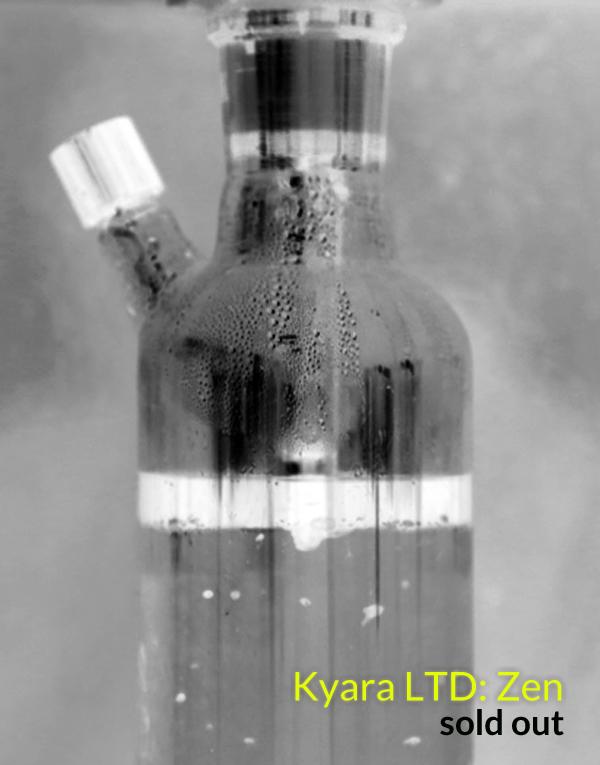The Oud Journey
Kyara LTD: Zen
The Great Cambodian Experiment: V
The warehouses in the oud center of the world do not stock Cambodian agarwood anymore. If you want to get a look at the best pieces go see the ones up on display behind the boss’ desk, but don’t bet on getting a piece of your own. This is largely because major oud hubs across the Far East are preoccupied with cleaning up Indonesia and Malaysia, from where everything gets cargoed off to China. As for Cambodia, even if brokers track down a batch of premium wood there’s no incentive to buy any of it because the Cambodians already sell directly to China. Scour as you might for quality chips at ground level, to get incense-grade agarwood in Cambodia you have to accept that you’re already up against Chinese mark-ups. But that’s not the biggest problem.
All the great batches of Cambodian agarwood collected in recent years ended up being used either for burning (incense) or carving (bracelets, miniatures, sculptures). All at spectacular prices. The ultimate calamity for all of us in the oud oil sector is that this meant the death of Oud Cambodi. The Chinese simply don’t make oud oil from their precious wood. This is why for the last few years ‘Cambodi’ ouds have only been so by name. It’s why every single one of the big Gulf companies’ suppliers of Cambodian oud sits back at their home smack in the middle of Trat, Thailand; not Phnom Penh, Pursat, Pailin or Kampung Speu.
But what if there was one last Herculean effort to produce the last pure incense grade Cambodian oud oils ever? What if we were in the middle of what veteran distillers called ‘the most elaborate distillation project in oud history?’
Agarwood collectors across Cambodia started to cash in on their stowed away stashes when the Chinese market started to boom. Some of them began clearing their display cabinets four to six years ago, while others only decided to give in since a year ago. But the one thing they all have in common is that now they offer their wood on a first come first serve basis where negotiations are out of the question because you can bet that if you don’t take whatever you can get, a broker for the Chinese business barons is already on his way to clean up after you.
I’ve begun to wonder if perhaps the Chinese are even more insane than we are. I’ve come to respect their discerning standard for wanting nothing less than the best, and since I learned about their appreciation for agarwood I started to love it more myself. They’ve brought back to life those stories about a revered and cherished magic wood that repeatedly comes up in feng shui literature and early texts of Chinese medicine, features in some pre-war ritual of the Samurai, and was on display at the emperor’s court. Modern Chinese art and culture show that all this is still real to many — and they spend a grand fortune to prove it. Isn’t that something?
Whatever our differing degrees of sobriety, we are up against the Chinese collectors to secure wood they’d use toward a rich tradition of incense burning and craftsmanship — to use in an even greater esoteric and more fragrant tradition.

The scope of our adventure isn’t limited to crafting a single great oil. We have something bigger in mind: a line up of oud oils that defy description. All the while keeping within the boundaries of our conscience, careful not to chase trees that ought to be left to live.
Have you ever smelled oud distilled in Cambodia or Thailand that didn’t smell yellow or orange, fruit and fig? You might have been teased by an exotic green note flying way on high, only to disappear behind a cloud of mild earthy spices. Or a hint of red that peaks from behind the curtain. But for the most part people enjoy these ouds exactly because of their lighthearted fruitiness, because they’re playful and accessible. Like pop music. Open to all, something to enjoy in the background without thinking much about it. But the connoisseurs in the crowd will demand: Where’s the jazz? Where’s the intrigue, the complexity, the soul?
We have two themes in mind for this canvas; classic and avant garde. Prepare yourself for oud that’s green, oud that’s red, oud with a hue of navy blue; mysteriously woody heart notes clad in incense — courtesy of the sickest grade of agarwood any distillation pot ever had in its belly.
We started with the avant garde, and after two full weeks of distillation collected our maiden oil: incense grade agarwood amassed over ten years turned into fine dust turned into an ocean green wonder. Made from the same calibre dark grain heartwood that went into crafting Kyara LTD Centennial, Kyara LTD: Zen is oud on another level. Where the Centennial is incense-green, Zen is ethereal-jade. A shoreside forest tranquility laced with an enchanting floral airiness reminiscent of Borneo 5000.
Fresh from the still, the scent has hardly begun to reveal itself, but a seasoned nose can tell you with certainty what this oil will turn into six months from now. For one, the incense heart note will by then have emerged and settled, rounding off the fragrance to perfection. The subtle floral notes that already permeate the scent will blossom and be transformed into an otherworldly ethereal bouquet. This is the kind of oud oil that could cause the Chinese collectors to have a change of heart. A fragrance that makes you swap the finest miniature carving for a bottle. Or a drop on the tongue. Anyone blessed enough to own a bottle can tell you why.

